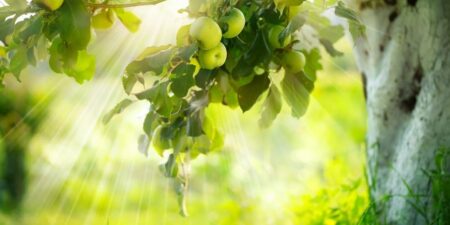

 We explain what producing organisms are, their classification and examples. In addition, consumer and decomposer organisms.
We explain what producing organisms are, their classification and examples. In addition, consumer and decomposer organisms.
What are producer organisms?
Producer organisms , also called autotrophs (from the Greek auto meaning “by itself” and tropos meaning ” nutrition “), are beings that produce their own food from inorganic substances such as light , water and carbon dioxide . , so they do not need other living beings for nourishment.
Producer organisms maintain the balance of the planet because they are the main source of food and provide all the nutrients to primary consumers, generate oxygen and contribute numerous gases that make up the atmosphere .
It can help you: Unicellular organisms
Examples of producer organisms
There are also aquatic producing organisms such as algae.
Some examples of producer organisms are:
- The purple bacterium.
- The grass.
- The weeping willow.
- The olive tree.
- The bushes.
- The Coleochaete alga.
- Some microorganisms.
Types of producer organisms
Photosynthetic producers take advantage of solar energy.
Producer organisms are classified into two types, depending on the energy source they use:
- The photosynthetic. They are the organisms that carry out the conversion of inorganic matter into organic matter through a process of synthesis of energy provided by sunlight . That process is called photosynthesis . For example, plants that have chlorophyll, such as asparagus and parsley.
- The chemosynthetics. They are the organisms that obtain energy from the oxidation of inorganic compounds such as iron, hydrogen, sulfur and nitrogen. For example, nitrogen bacteria that come into contact with nitrogen from the air transform it into nitrates that can be used by plants.
Producer organisms are the initial link in the food chain , which is made up of three groups of organisms:
- The producers
- The consumers
- decomposers
consumer organisms
Primary consumer organisms feed on producer organisms.
Consumer organisms, also called heterotrophs (from the Greek hetero meaning “different” and trophos meaning “nutrition”) feed on organic matter , that is, other plant and/or animal living beings . Within the food chain, consumer organisms are divided into:
- Primary consumers. They are herbivorous animals that feed on different parts of plants such as leaves, stems, roots, fruits, seeds or substances made by the plant. Some examples of primary consumers are the goat, cow, cricket, sheep, bat , hummingbird, and gorilla.
- Secondary consumers. They are carnivorous animals , and are classified into different types, such as predators (which hunt other animals) and parasites (which feed on others, but without killing them). In many ecosystems this is the link of small carnivores, or also of omnivorous animals , which feed on everything. Examples of secondary consumers are foxes , spiders , praying mantises, opossums, seals, and small hunting snakes .
- Tertiary consumers. They are animals that feed on secondary and primary consumers. In this category are the snakes of the family of boas, hawks, owls, orca whales, wild dogs.
- Quaternary consumers. They tend to be consumers that have no natural predators and, therefore, occupy the final position (the top) of any trophic web, that is, the final consumers or absolute predators. For example, birds of prey, the shark , the polar bear , dolphins, felines like the lion , and canines like the wolf .
- Ghouls or detritivores. Some consumers, called detritus eaters or detritus eaters, feed on dead organic matter including carcasses, leaf litter, and feces. A special type of detritus are those consumers that feed on corpses, that is, the body of dead organisms. Once life has ceased, different microorganisms begin to digest organic matter, aided first by insects, scavengers and other organisms that devour the body or destroy the remains of the hunt of other larger animals.
More in: Consumer organizations
decomposing organisms
Fungi are decomposing organisms that use energy from organic remains.
Decomposing organisms are those that take advantage of the energy of decomposing organic matter , that is, the remains of plants and animals. These microbial organisms convert the remains into inorganic energy that is then used by the producing organisms. Some examples of decomposing organisms are:
- bacteria. For example: the azotobacter and pseudomonas.
- The fungi. For example: shiitake and water mold.